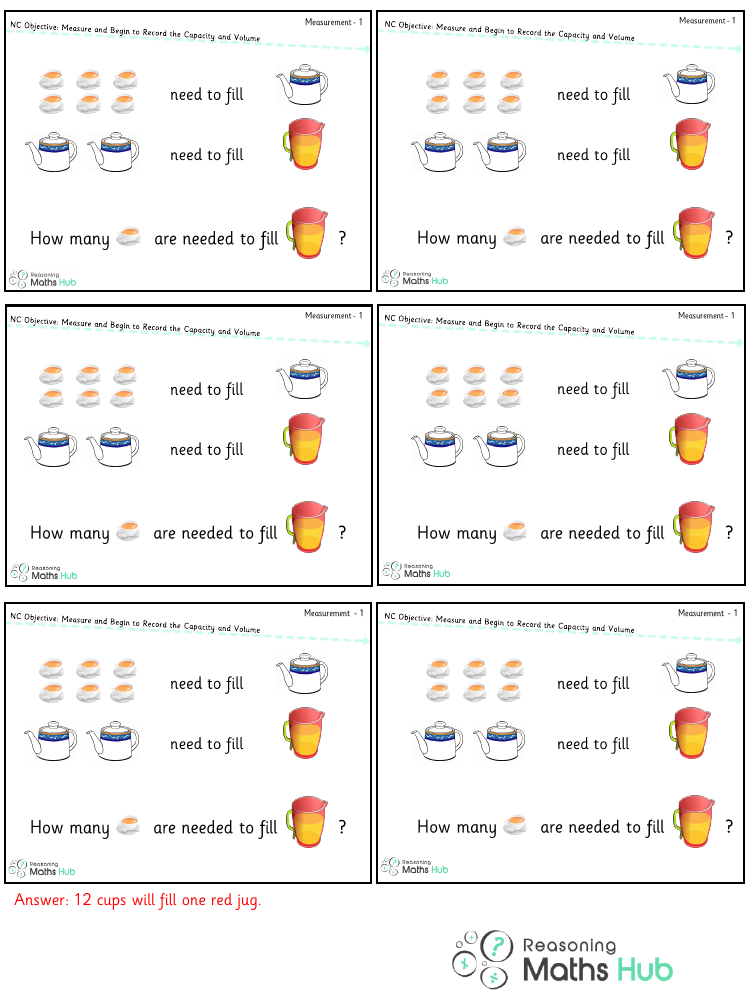Compare, describe and solve practical problems for capacity and volume 2 - Reasoning

Maths Resource Description
In a lesson focused on comparing, describing, and solving practical problems for capacity and volume, students are encouraged to engage in reasoning exercises that deepen their understanding of these concepts. The lesson might start with a discussion on the difference between capacity, which refers to the maximum amount that something can contain, typically measured in litres or millilitres, and volume, which is the amount of space something occupies, measured in cubic units. This foundational knowledge sets the stage for the reasoning tasks ahead.
During the reasoning activities, students would be presented with various real-life scenarios involving containers of different shapes and sizes. They might compare two containers to determine which has a greater capacity or require to solve problems where they need to figure out how much liquid is needed to fill a container to a certain level. The problems could also involve finding the volume of solid objects using given formulas. Through these exercises, students would learn to apply mathematical concepts to practical situations, enhancing their problem-solving skills. They would also practice articulating their thought processes and reasoning behind their answers, which is a crucial part of developing mathematical understanding.